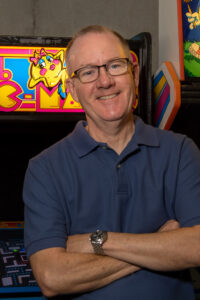
I’m not sure exactly when I first became interested in radios. As a young Cub Scout, I built a crystal radio receiver from a kit. The detector was a diode, but I always wanted to try a galena crystal and cat whisker. Later I had a pair of Radio Shack walkie-talkies, which my friends and I used as we wandered the swampland behind our houses near New Orleans. And then during the 1970s, I recall a few road trips chatting away on CB. But I really wasn’t too keen on radios—my fun was Lionel trains, then HO-scale slot cars, chemistry sets, telescopes, and finally model rockets.
We had a Realistic portable multiband receiver and I tuned in the shortwave band late at night. Happy Station from Radio Nederland was a favorite show. I remember once listening to a ham calling out for a contact, and using my limited Morse code skills I picked out dahdidahdit dahdahdidah, dahdidahdit dahdahdidah, dahdidit dit, dahdidah CQ CQ DE K… and that’s as far as I got! Even so it didn’t really catch my interest enough to investigate amateur radio. Still… my dad’s cousin bought me an electronics learning kit. I could follow the instructions and wire up all sorts of experiments, including simple AM receivers, but I never did grasp the theory.
I headed off to MIT to study geophysics, and in my second year I took an introduction to electronics class. Wow that was fun! I followed that with a digital design lab (Karnaugh maps, flip-flops, state machines, logic minimization, cool suitcase lab kits) and now I was hooked. Leaving the oil industry behind, I spent my career designing large-scale digital logic (integrated circuits). I became fluent with all sorts of electronic design automation tools: HDLs, logic synthesis, timing analysis… but very little analog and still no RF.
Then in 2011 my good friend Spencer W2SW called me up, and said he was preparing to teach a class on antennas. Could I help? Well, I didn’t know much about antennas, but I had lots of experience giving training classes. So I pitched in and advised Spence on creating labs and exercises, and then assisted during the class itself.
After a few years of helping run classes, I had learned a lot about antennas and radios. With Spencer’s encouragement (thanks, Elmer!) in 2014 I studied and got my General ticket, and a year later my Amateur Extra. Unfortunately my location in Massachusetts had very high RFI, and with a somewhat compromised attic antenna it was a challenge to operate.
We downsized and moved to Maine in 2019, and at my new QTH I have much more space for antennas. Best of all, the location is very RF quiet. I’ve acquired a complete station of fine Elecraft gear, and I’m slowly improving my operating skills.
As a ham, I’ve volunteered for several years at the Can-Am Crown Sled Dog Races up in northern Maine. Also I’ve helped out for the Trek Across Maine.
What’s next? More antennas, better operating, and learning CW. See you on the air!
73
Steve
W1SEG